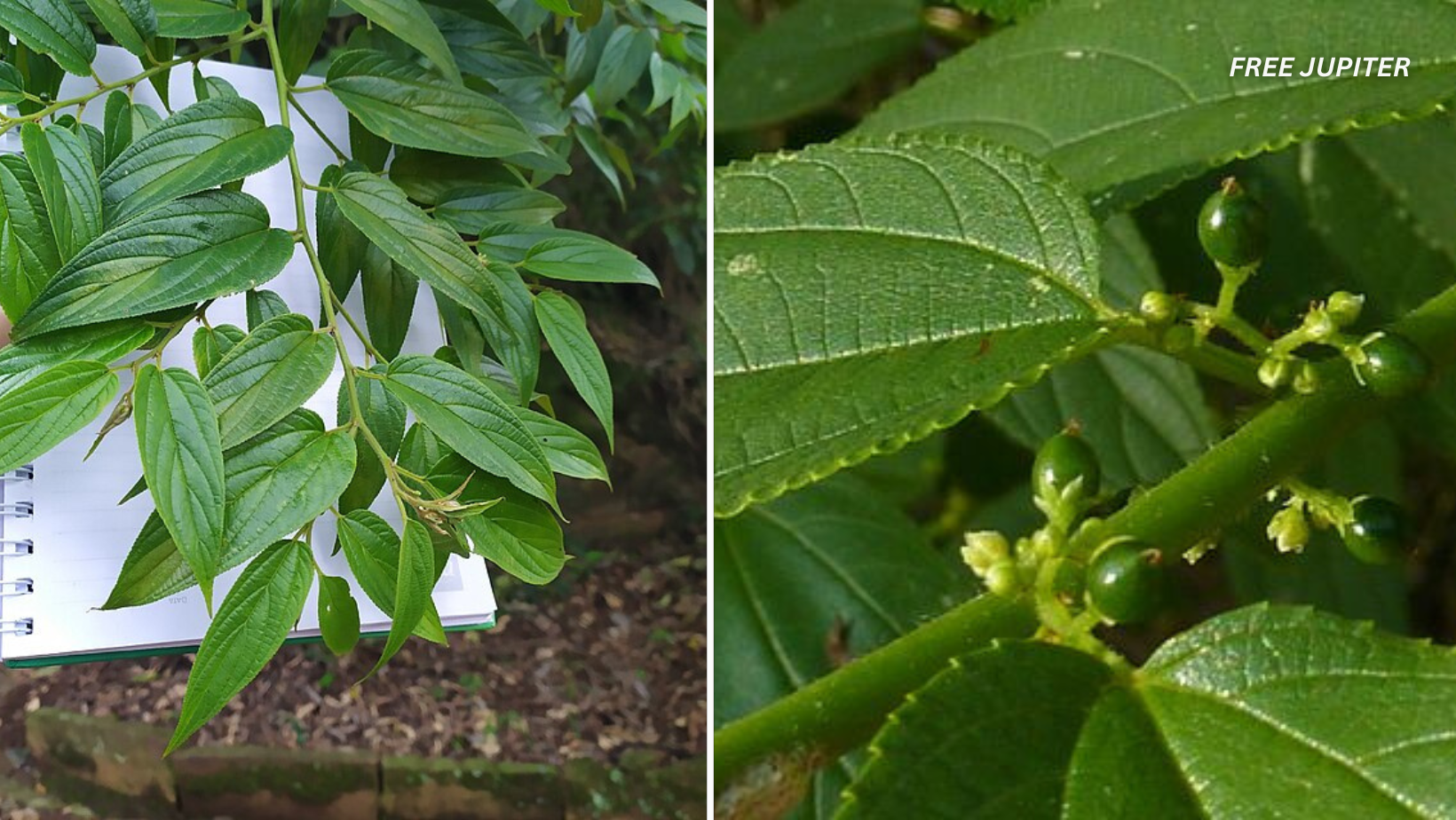In a groundbreaking discovery, researchers have identified cannabidiol (CBD)—a therapeutic compound most famously extracted from the cannabis plant—in an entirely different species: Trema micrantha Blume. Native to parts of South and Central America, this fast-growing shrub, often dismissed as a weed, could provide a new and more accessible source of CBD.
Unlike cannabis, Trema micrantha contains no tetrahydrocannabinol (THC)—the psychoactive element responsible for cannabis’s high—making it potentially exempt from strict regulations that govern cannabis cultivation and use. This breakthrough, led by Brazilian scientists, could pave the way for wider, less restricted access to CBD-based treatments around the world.

What Is Trema micrantha Blume?
Trema micrantha is a hardy plant that thrives in poor soil, grows quickly, and is commonly found along roadsides and degraded landscapes. Belonging to the Cannabaceae family—just like hemp and cannabis—it has long been used in traditional remedies in some Latin American communities, though its medicinal properties had never been studied in depth.
Its ability to grow in tough conditions and improve soil quality has made it a valuable tool in reforestation efforts, but only recently have scientists uncovered its potential as a source of bioactive compounds.
CBD Found Outside the Cannabis Family
A research team at the Federal University of Rio de Janeiro, headed by Dr. Rodrigo Moura Neto, turned their attention to native flora to investigate possible medicinal compounds. When studying Trema micrantha, they identified CBD in the plant’s flowers and fruits—with no trace of THC.
The discovery was confirmed through gas chromatography and mass spectrometry. The complete absence of THC could be a game changer: “Because this plant doesn’t fall under cannabis regulation, it may allow broader and easier scientific exploration,” Dr. Neto explained in an interview.
The Brazilian government has since invested 500,000 reals (approximately USD $104,000) to fund further research over the next five years.
Why This Discovery Matters
The global CBD market is expanding rapidly, as people seek natural alternatives for conditions like anxiety, pain, and sleep disorders. But cannabis-based CBD remains restricted in many countries, expensive to produce, and environmentally demanding.
Trema micrantha offers potential solutions to all of these issues:
Less Regulatory Burden: Without THC, the plant might avoid classification as a controlled substance, simplifying legal and logistical hurdles for researchers and businesses.
Lower Production Costs: Cannabis cultivation, especially indoors, requires intensive resources. In contrast, Trema micrantha grows easily in the wild, cutting costs and environmental impact.
Sustainability: Cannabis farming has been criticized for water use and soil damage. Trema micrantha may enhance the land it grows on.
Improved Accessibility in Developing Countries: In regions with strict drug laws and limited healthcare access, a legal and easy-to-grow alternative could bring CBD treatment to more people.
A New Frontier in Botanical Research
This discovery not only diversifies the potential sources of CBD but also raises questions about cannabinoid production across plant species. Could other overlooked plants also produce cannabinoids? How did Trema micrantha evolve this ability?
Since it belongs to the same botanical family as cannabis, researchers believe the CBD production pathway may have been retained through evolution. They are now studying the genetic and biochemical mechanisms behind its cannabinoid synthesis.
Scientists are also interested in whether the plant produces minor cannabinoids or synergistic compounds that could enhance the therapeutic effects of CBD.
Hurdles and Considerations
Despite the excitement, several challenges remain:
CBD Yield: The amount of CBD per plant is still under study. If it’s low, large-scale cultivation might be necessary to make extraction viable.
Market Confidence: Consumers accustomed to cannabis-derived CBD may be skeptical of a new source, requiring education and clinical validation.
Legal Future: While currently outside cannabis law, regulations could evolve as the plant gains popularity.
Ethical Sourcing: With rising interest, it’s essential to ensure fair practices, especially in areas where indigenous knowledge played a role.
Expert Reactions and Future Outlook
Experts are cautiously optimistic. Dr. Ethan Russo, a leading cannabis researcher, called the discovery “potentially disruptive,” noting it could expand global access to CBD. Plant geneticist Dr. Carla Oliveira emphasized the importance of biodiversity, saying, “This proves we still have so much to learn from so-called weeds.”
If further research confirms that Trema micrantha is a sustainable, legal, and effective source of CBD, it could reshape the landscape of plant-based medicine and spark renewed interest in underappreciated flora worldwide.
